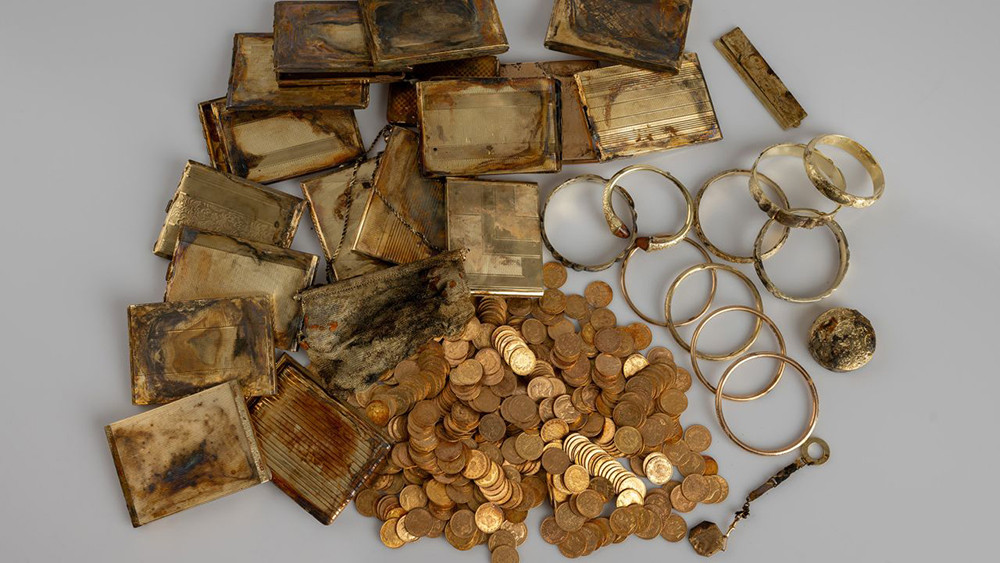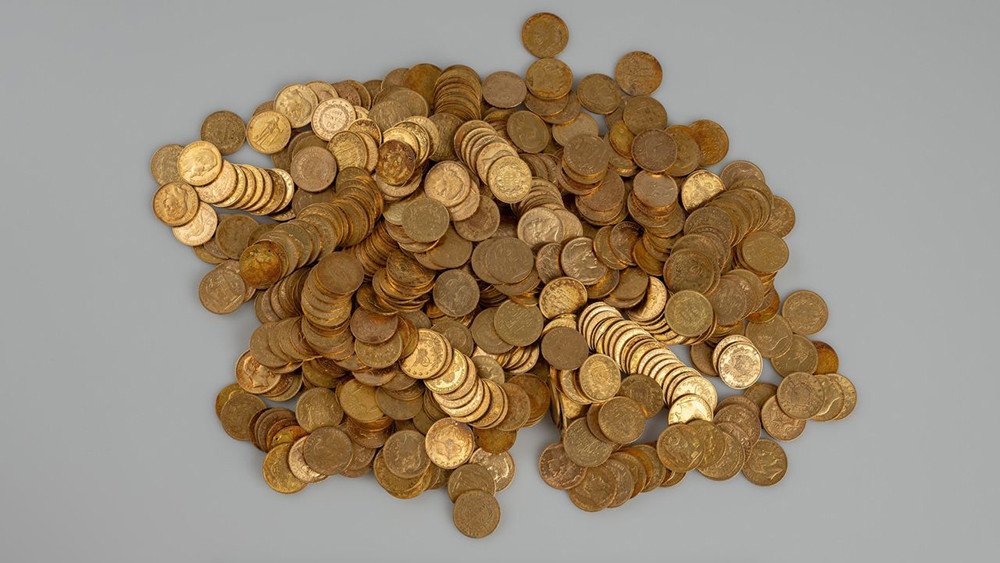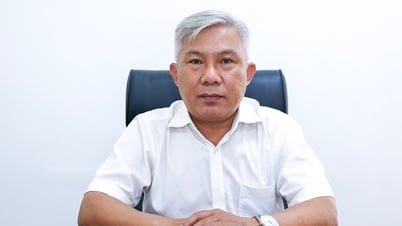According to Miroslav Novak, Head of the Archaeology Department of the East Bohemian Museum, two anonymous hikers discovered an aluminum barrel protruding from the stone wall.
When they opened it, they discovered a mysterious treasure trove of 10 gold bracelets, 17 cigar boxes, a makeup box, a comb, and 598 gold coins. They took all the artifacts to a museum in the nearby town of Hradec Králové.
Although the identity of the owner of the gold chest is unknown, the museum representative said that its age is no more than a century old, as many of the coins are dated 1921. “It is possible that the treasure is related to the chaotic period before World War II, when Czechs and Jews left the border area, or in 1945, when the Germans left,” Mr. Novak said.
Although the appraisal process has not been completed, the 3.7kg of gold coins in the treasure alone are valued at about 8 million Czech koruna (equivalent to 360,000 USD), according to Mr. Vojtěch Brádle - coin expert of the museum.

Mr. Novak said the museum has received many calls from people with different speculations. He hopes that the information from people can decipher the origin of the gold.
One notable detail is that the entire treasure contains no local coins.
“Half of the coins are of Balkan origin and the other half are French,” Novak revealed. Central European coins such as German coins are also missing. However, the location of the discovery is on the old border between the Czechs and the Germans.
One theory is that the treasure belonged to wealthy families in the area, such as the Swéerts-Špork family, who owned the Kuks estate, a large Baroque complex overlooking the Elbe River. Another theory suggests that it could have been the spoils of war by Czechoslovakian legionnaires.
According to Mary Heimann, professor of modern history and expert on Czechoslovakian history at Cardiff University (UK), the coin in the treasure dated 1921 is very remarkable. That was the year of the end of the Polish-Soviet War, and also the year of the financial crisis in Czechoslovakia (the country split into the Czech Republic and Slovakia in 1993).

While Mr Novak believes the treasure could have been hidden around 1945, Ms Heimann said that if that were the case, there should have been more recent coins. However, the lack of local currency complicates the speculation.
"The person who hid this treasure could be a collector, a museum employee, or even someone who stole a valuable collection," Ms. Heimann speculated.
As for who will be the legal owner of the treasure, according to Czech law, Mr. Novak said that archaeological finds belong to the local regional government from the moment of discovery. The finder will be rewarded with a sum of money, depending on the metal value and historical value of the artifact.
After being thoroughly analyzed, the items will be preserved and stored in the museum's coin collection.
(According to CNN)
Source: https://vietnamnet.vn/dang-di-bo-tren-nui-phat-hien-kho-vang-bi-an-2403522.html


![[Photo] General Secretary To Lam receives Chief of the Central Office of the Lao People's Revolutionary Party](https://vphoto.vietnam.vn/thumb/1200x675/vietnam/resource/IMAGE/2025/5/30/140435f4b39d4599a3d17975dfb444c5)

![[Photo] Journalists moved to tears at the Memorial Service for the soldiers who died in Gac Ma](https://vphoto.vietnam.vn/thumb/1200x675/vietnam/resource/IMAGE/2025/5/30/9454613a55c54c16bf8c0efa51883456)

![[Photo] A delegation of 100 journalists from the Vietnam Journalists Association visits the soldiers and people of Truong Sa island district.](https://vphoto.vietnam.vn/thumb/1200x675/vietnam/resource/IMAGE/2025/5/30/0984a986227d4e988177f560d2e1563e)
![[Photo] National Conference "100 years of Vietnamese Revolutionary Press accompanying the glorious cause of the Party and the nation"](https://vphoto.vietnam.vn/thumb/1200x675/vietnam/resource/IMAGE/2025/5/30/1cf6cd5c8a934ebfa347028dcb08358c)





















































































Comment (0)